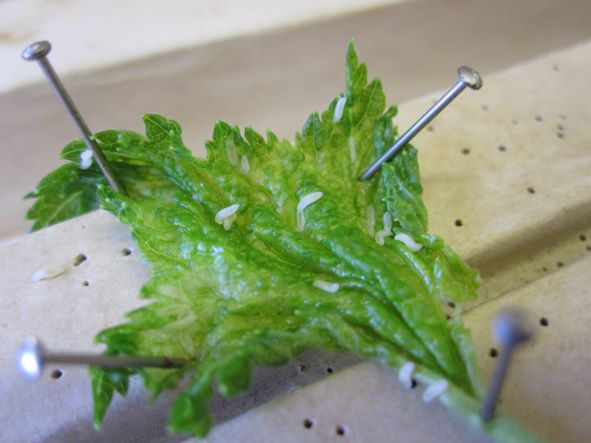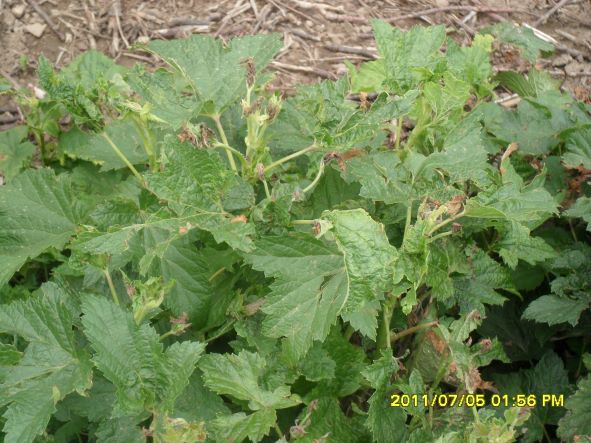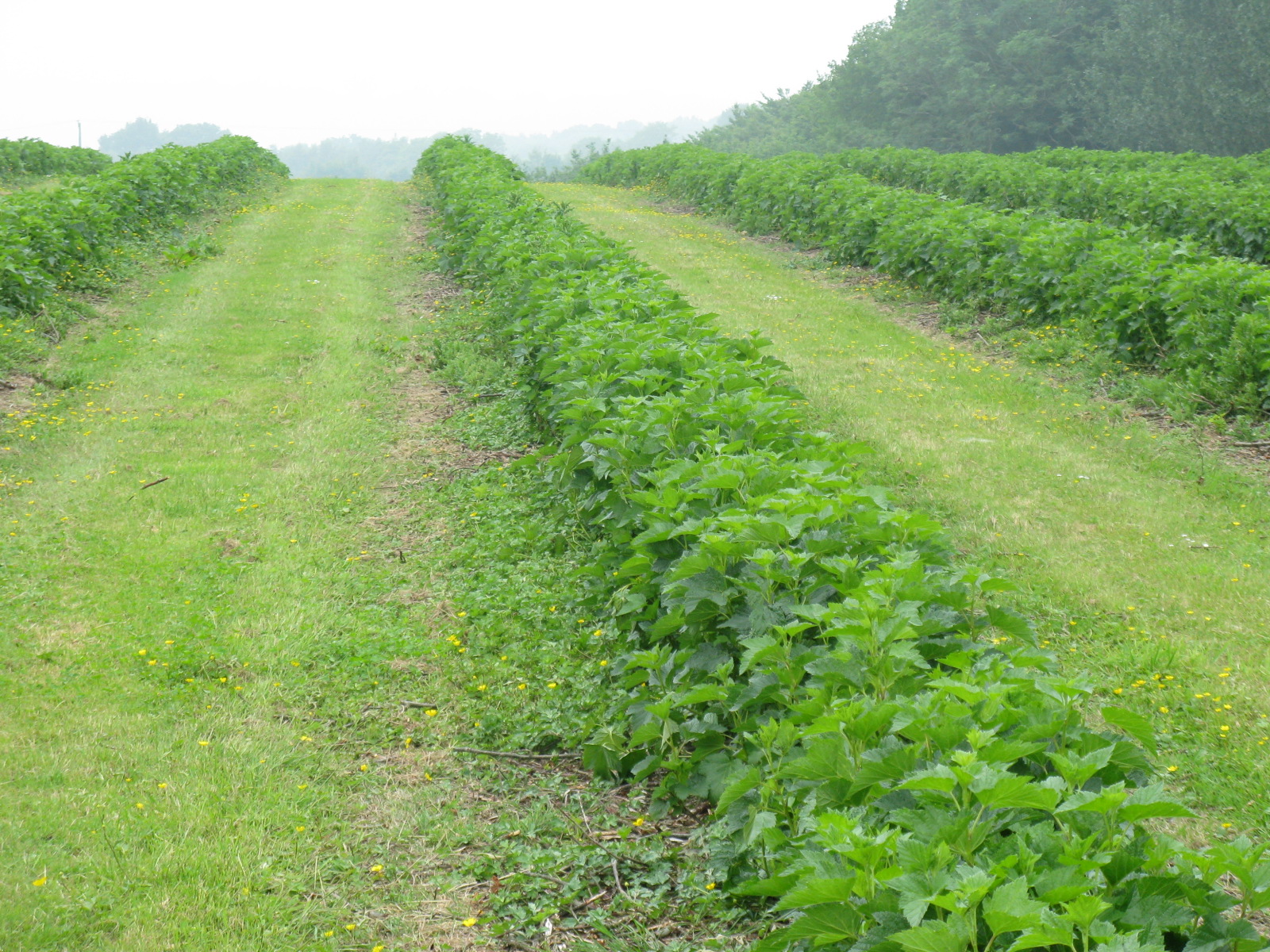Please click here to access the main AHDB website and other sectors.
- Home
- Knowledge library
- Blackcurrant leaf midge
Blackcurrant leaf midge
Find a detailed look at specific damage caused by blackcurrant leaf midge, as well as a novel way of countering its threat.
Return to the main page: Developing novel biocontrol methods for pests and disease in blackcurrant
Why is this pest an issue?
The blackcurrant leaf midge has become a more frequent pest of blackcurrants since the withdrawal of the broad-spectrum insecticide fenpropathrin (Meothrin), a synthetic pyrethroid that was routinely used for blackcurrant gall mite control and provided incidental control of leaf midge.
Adult females lay eggs in the young furled leaves in shoot tips. Eggs hatch after a few days and the larvae feed in furled leaf galls for 10-14 days, before dropping to the soil to pupate. Three to four generations can occur in a season and larval feeding causes the young leaflets to curl and twist as they develop.
Twisted shoot tips turn brown, then black. In severe attacks, every new leaflet that develops in a shoot is attacked and shoot growth can be stunted by 30–50%.
Young leaf tissue unfurled to reveal blackcurrant leaf midge larvae feeding
The importance of the damage varies depending on the bush/plantation age or growth phase. Attacks are of greatest significance in nurseries where new growth is critical, in new plantations where stunting of growth delays establishment, in fruiting bushes where the number of replacement shoots developing from the base is insufficient, or on regrowth in plantations that have been cut back.
A severe attack by blackcurrant leaf midge
The relationship between severity of galling damage and loss of growth
What are the issues involving growth and yield posed by leaf midge damage?
Galling damage and growth loss – the relationship
Trials were done in both established blackcurrant plantations in England and a cut-down plantation in Scotland to assess the effects of leaf midge damage on growth and cropping.
The trials on established plantations ran for three years and included a total of seven commercial crops.
Weekly sex pheromone trap catches, midge galling damage, yield and shoot growth, were recorded in plots that were sprayed with a synthetic pyrethroid insecticide (bifenthrin or lambda-cyhalothrin) against first and second generation midge attacks, to maintain low midge populations.
Similar records were collected from plots that were not treated.
Findings
It was found that the average yields from treated and untreated plots were almost identical, showing that controlling leaf midge attacks does not significantly affect yields in subsequent years.
These findings indicate that leaf midge damage in established plantations is largely cosmetic and that treatment with insecticides is unjustified.
This will enable commercial growers to save time and money on control sprays. A similar trial was carried out on the first year of regrowth in a cut-down blackcurrant plantation in Scotland.
The same records were collected from plots that were sprayed against first and/or second generation midge attacks. These were compared with untreated plots.
The insecticide sprayed plots gave more than 96% control of leaf midge galling, which was severe on the untreated plots.
Failure to control leaf midge in the first year of regrowth in the untreated plots resulted in severely stunted shoot growth and branch proliferation, which was so severe that bushes failed to recover adequately in the second year.
This work demonstrated the need to use insecticides to control leaf midge in re-growing bushes and by implication, in young establishing bushes.
Re-growing bushes are more in need of leaf midge control than established fruiting plantations
The value of the sex pheromone traps to time sprays, was also demonstrated in this part of the work.
Use of sex pheromone traps
Research was carried out to find out how to use sex pheromone monitoring traps for blackcurrant leaf curling midge.
Can sex pheromone traps reduce galling damage?
Statistical analysis of the data from the crop damage work showed that more than half of the variation in galling damage could be predicted by the numbers of midges caught in pheromone traps for the first and second generations.
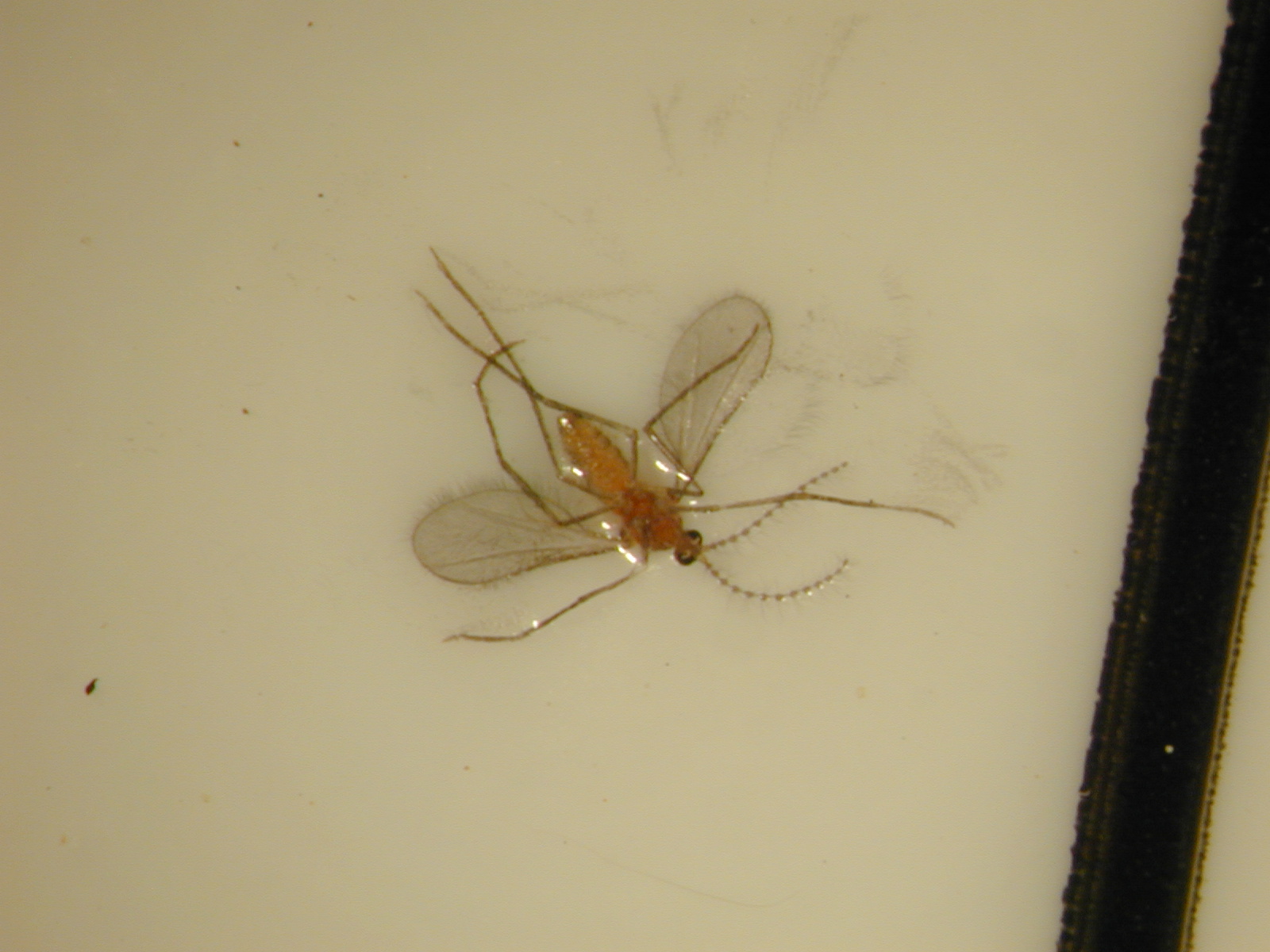
Adult midge caught in a pheromone trap, which can be used to predict crop damage
However, given that midge attacks did not result in yield losses in established plantations, it was not appropriate to set an economic damage threshold.
For young and cut-down bushes, a nominal threshold of 10 midges per trap per week was set for timing first and second generation insecticide sprays.
Spray timing
In the first three years of the project, the timing of sprays were examined in relation to sex pheromone trap catches using the standard broad spectrum synthetic pyrethroids bifenthrin and lambda-cyhalothrin and compared with a novel coded insecticide (UK 385a).
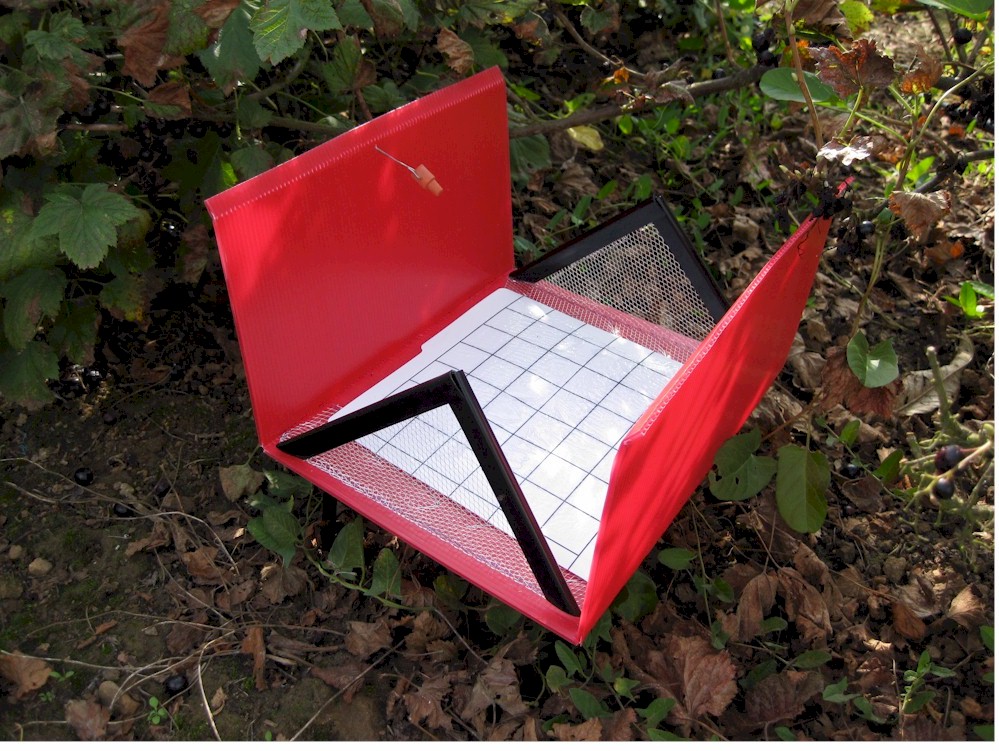
Sex pheromone trap used to monitor for the presence and number of blackcurrant leaf midge adults – opened to display the pheromone dispenser
The novel product gave excellent (>90%) control of midge larvae in galls, but it did not prevent gall damage, while the pyrethroids prevented galling when applied within a few days of a threshold sex pheromone trap catch but did not control larvae if applied later.
Therefore, a new selective insecticide for leaf midge control and an effective means of scheduling the timing of its application was identified in the project.
Uneconomical
It was anticipated that the new product would be available for use in the UK from 2017, with a recommendation for use on blackcurrants.
Caged experiments were done to investigate the use of the sex pheromone for midge control.
These failed to show any reduction in leaf midge galling.
In addition, the high cost of synthesising a blackcurrant leaf midge sex pheromone will make its exploitation uneconomical.
Useful links
AHDB funded research into blackcurrant botrytis control
Evaluation of fungicides for the control of Botrytis
Developing traps and thresholds for blackcurrant sawfly
Read the biocontrol in soft fruit guide
Download the bush fruit crop walkers' guide
Authors
These pages were originally authored by Michelle Fountain, Angela Berrie and Scott Raffle (NIAB) in 2015.


